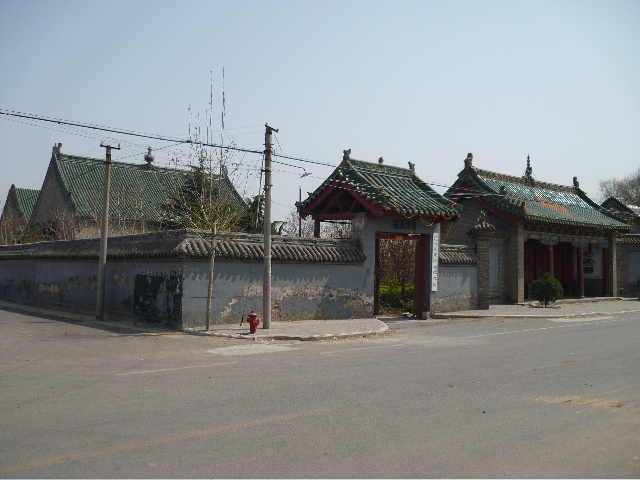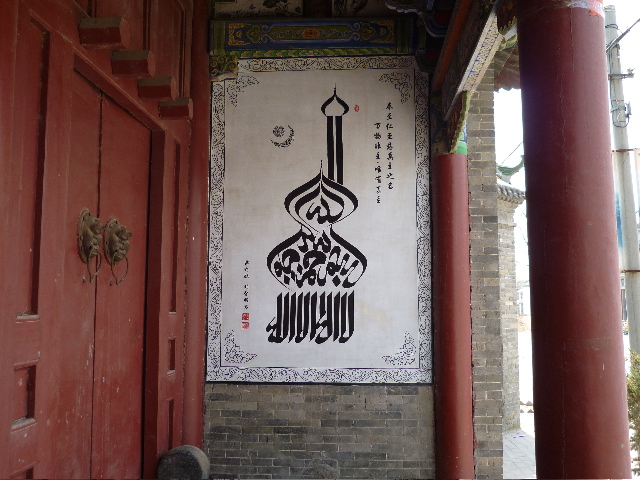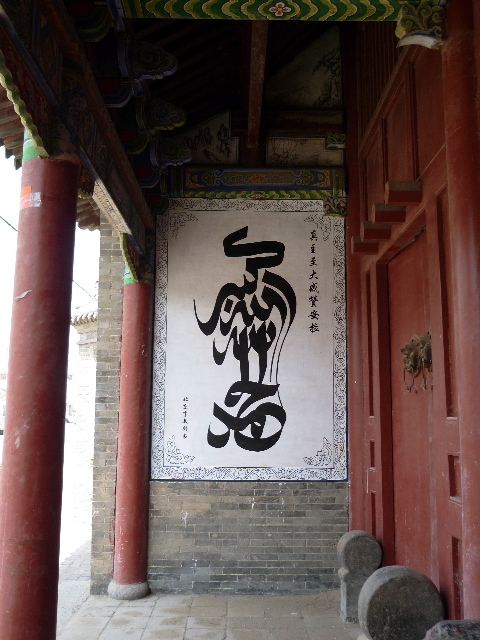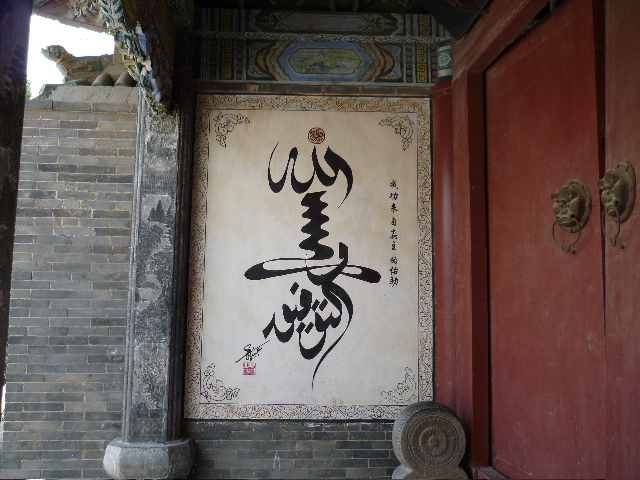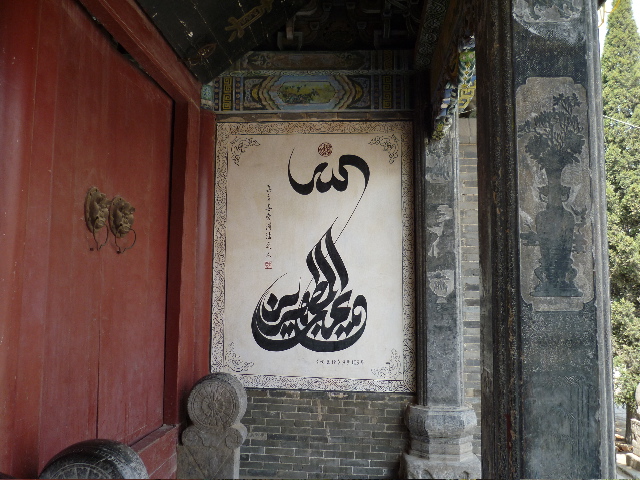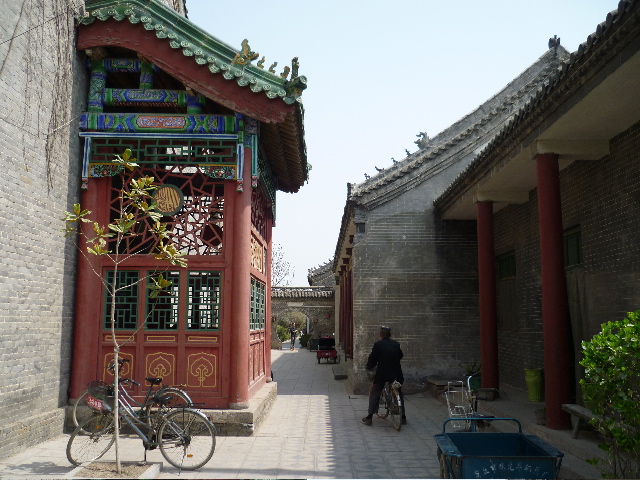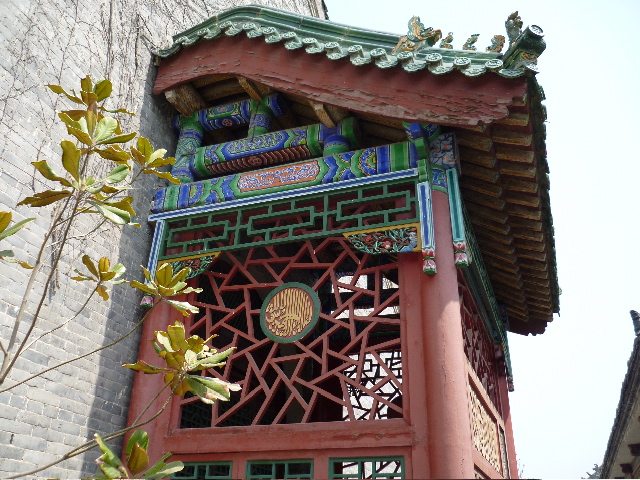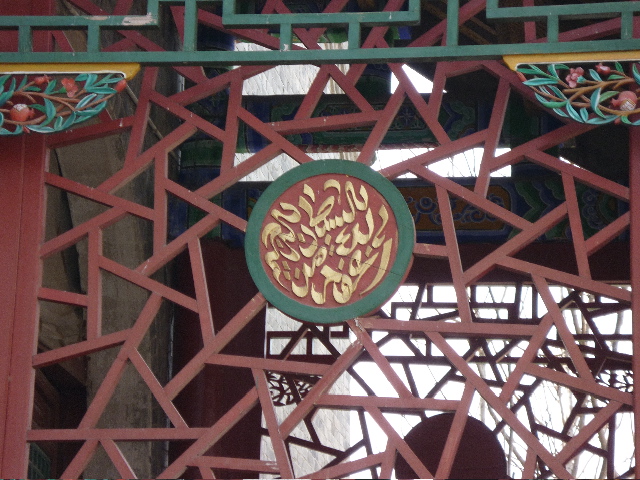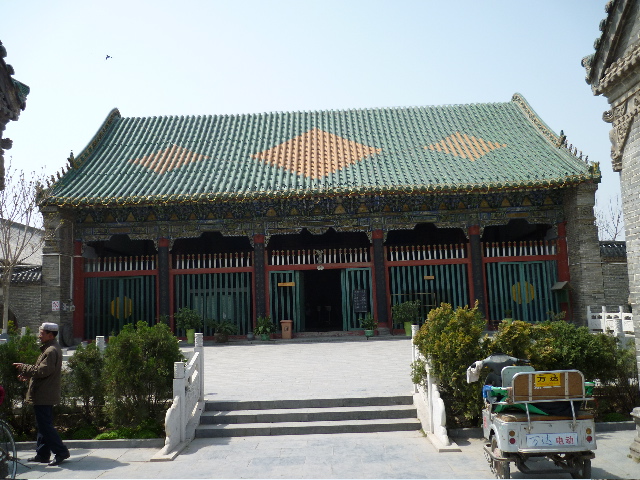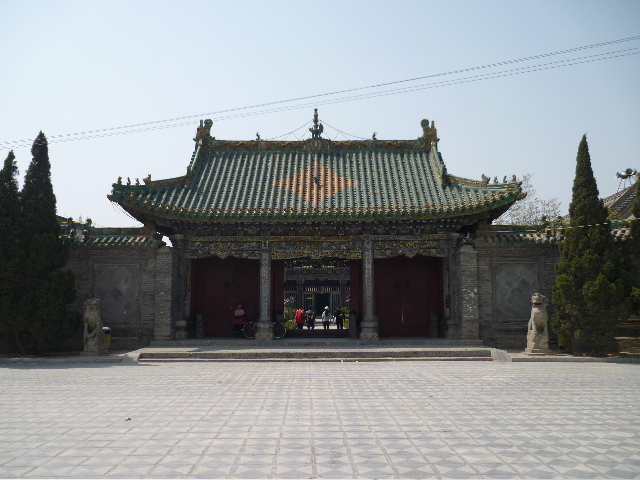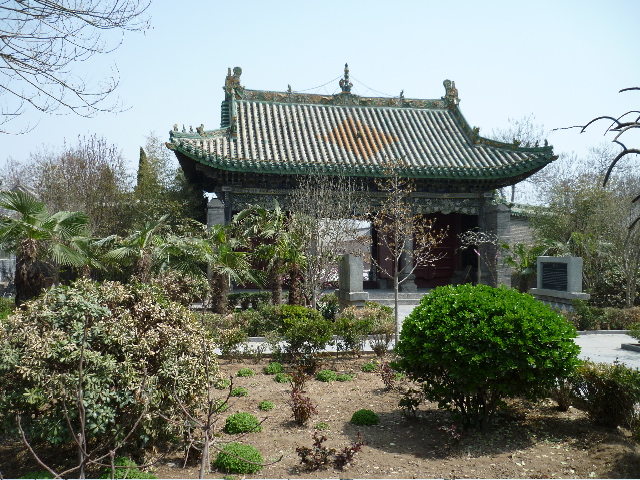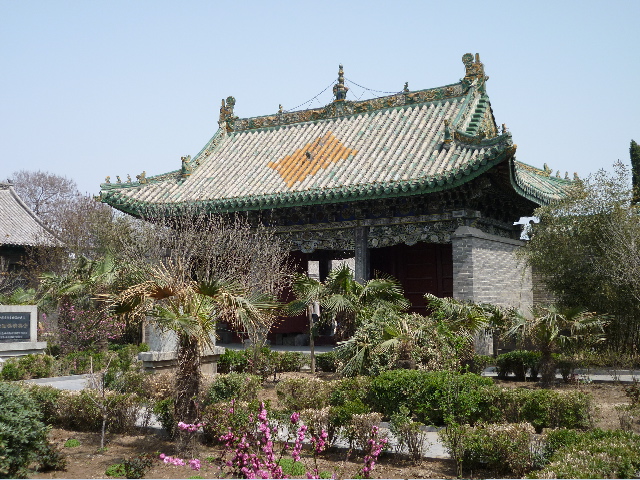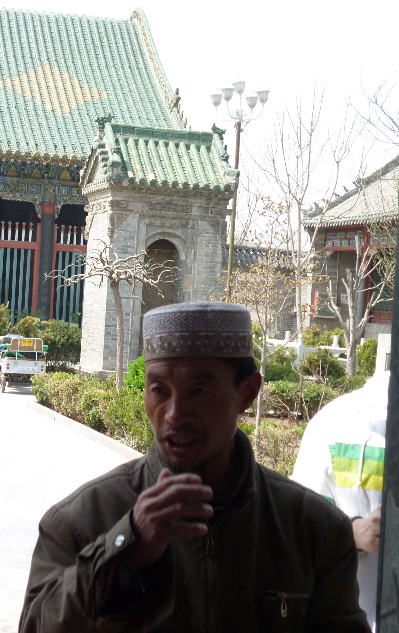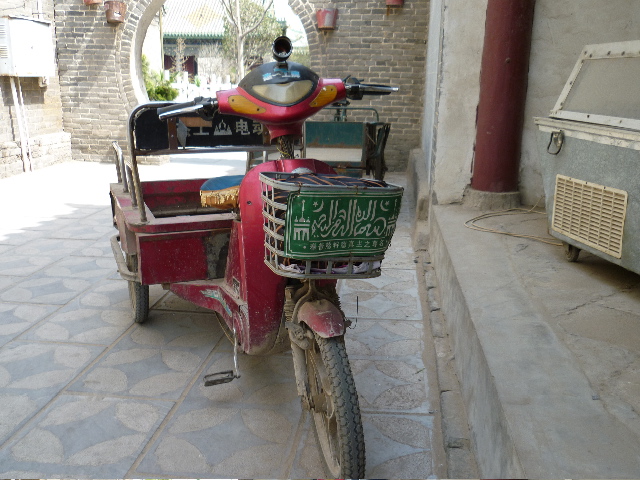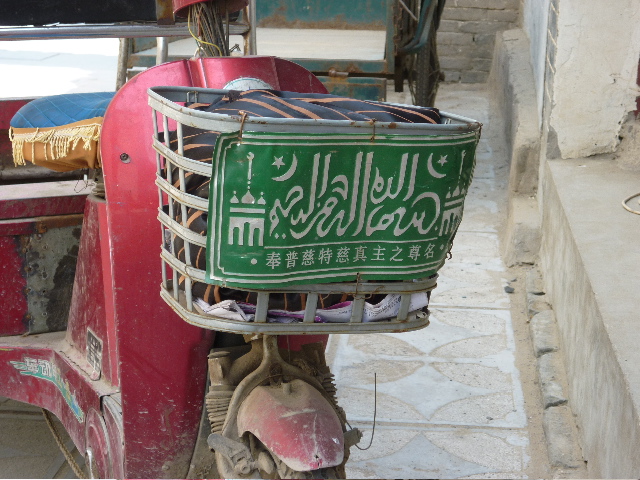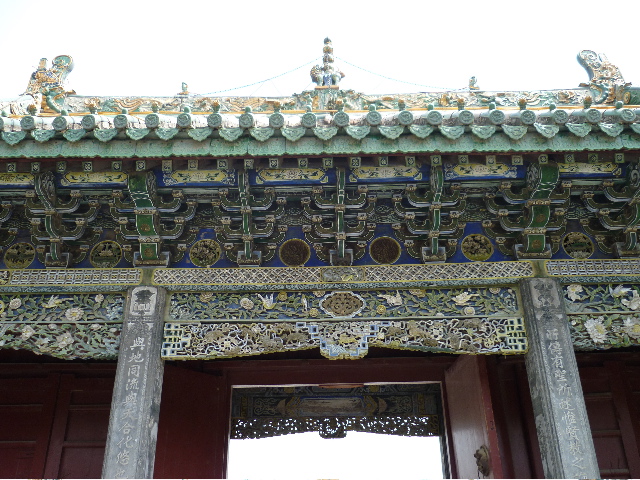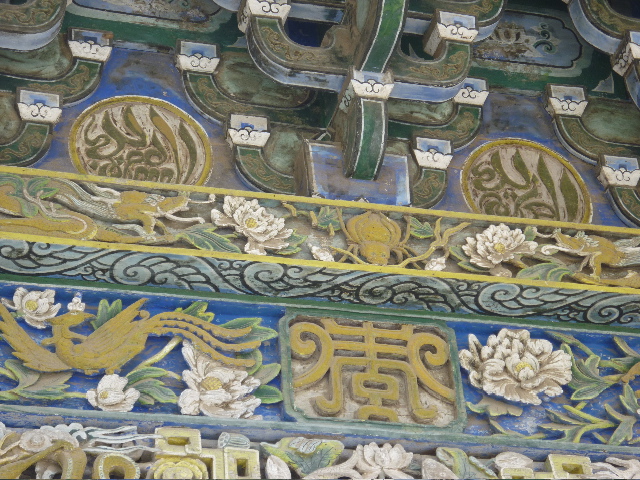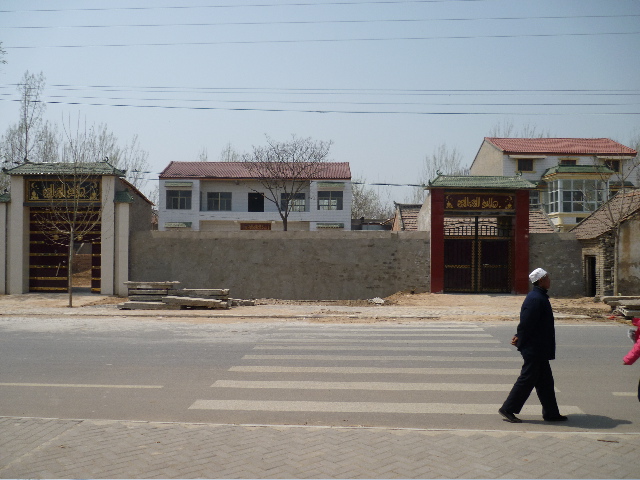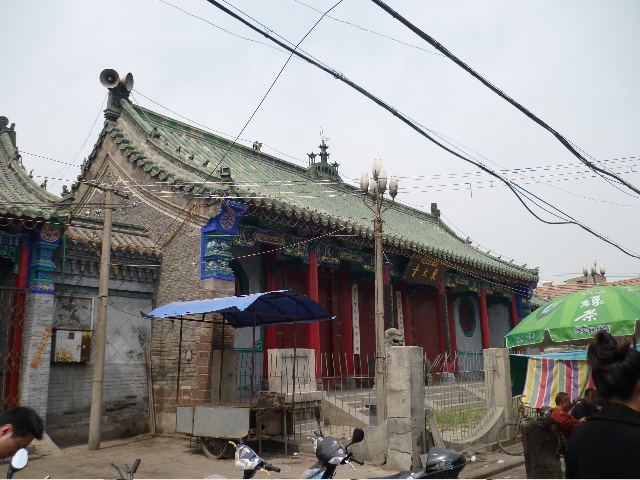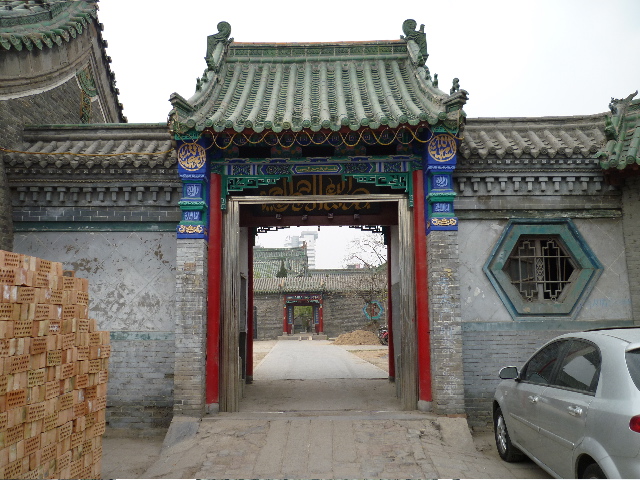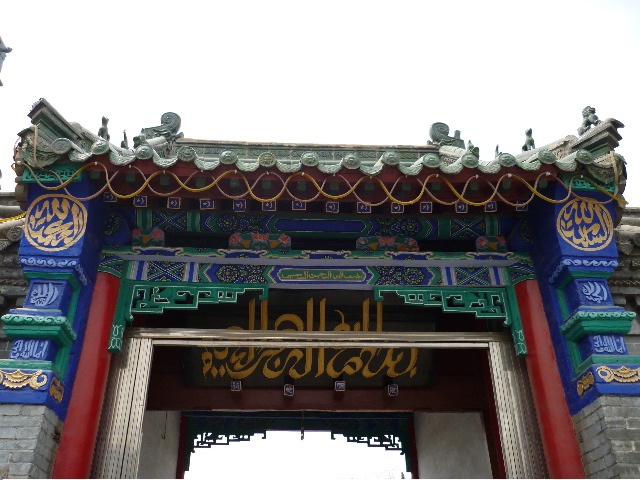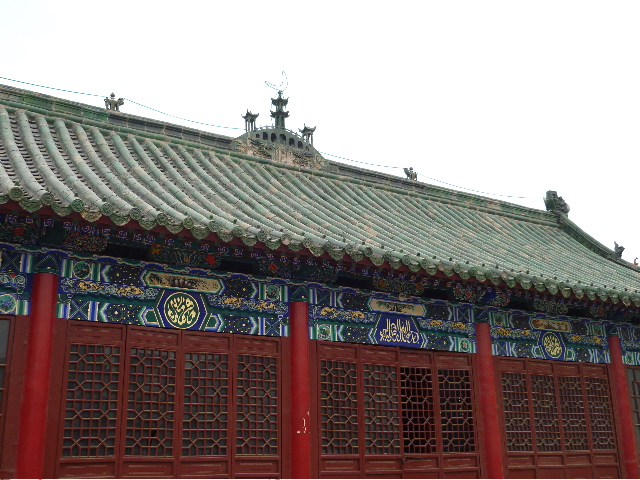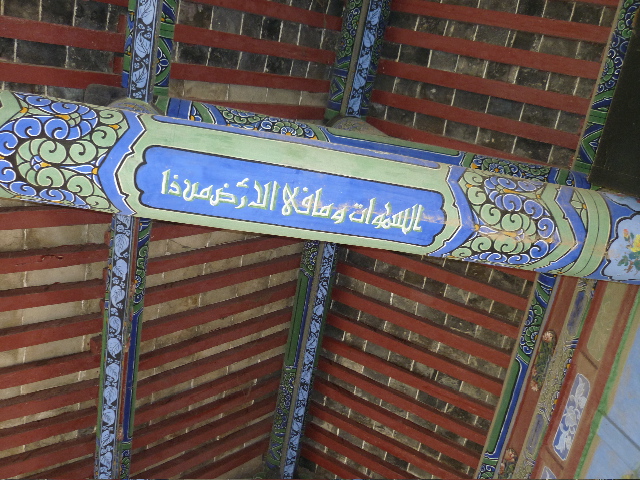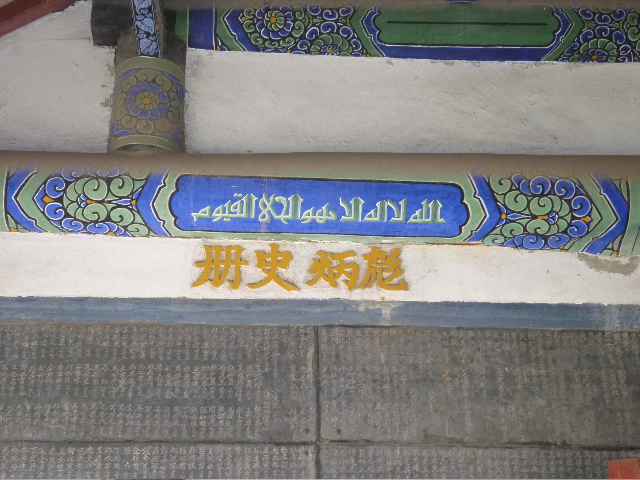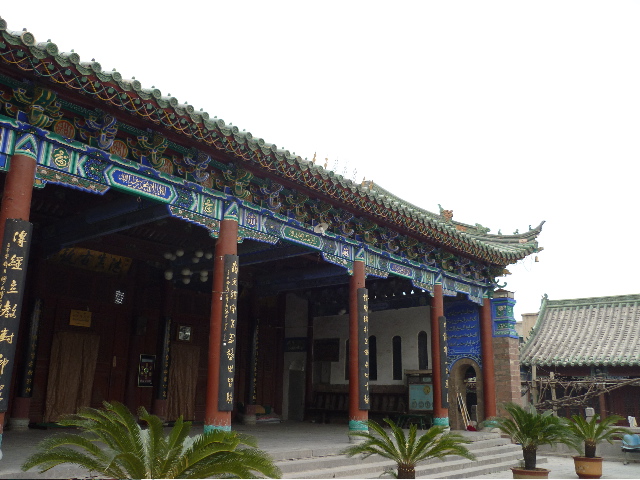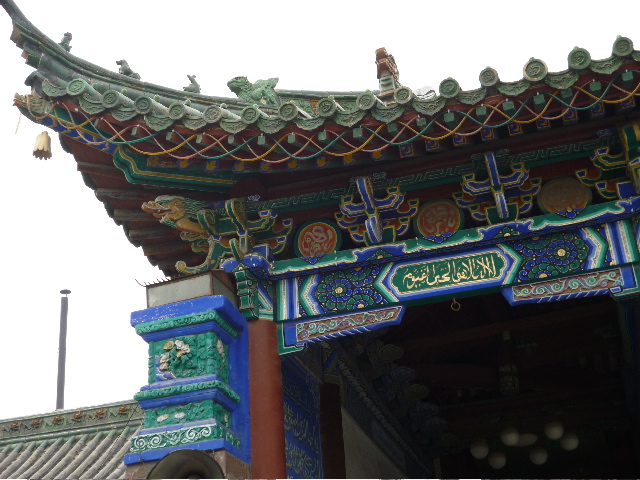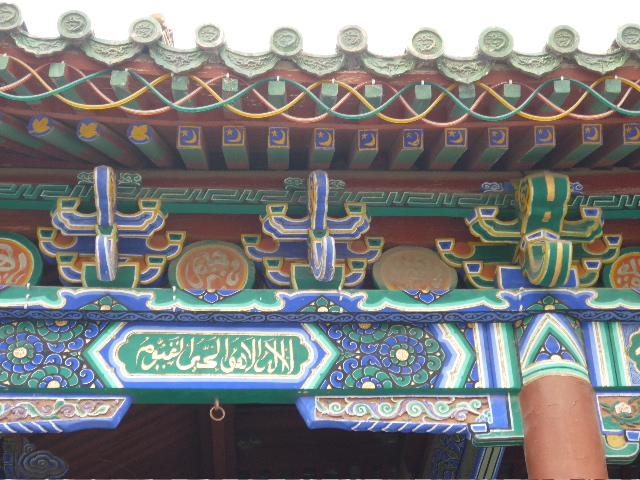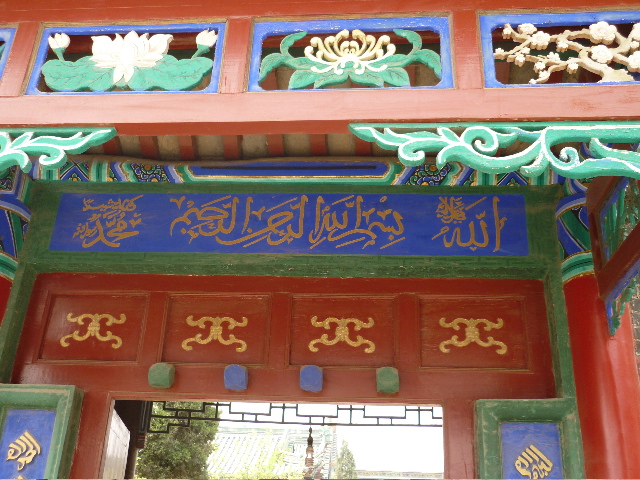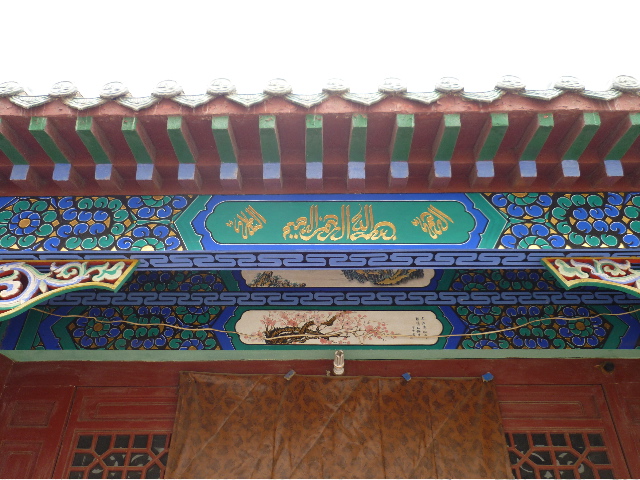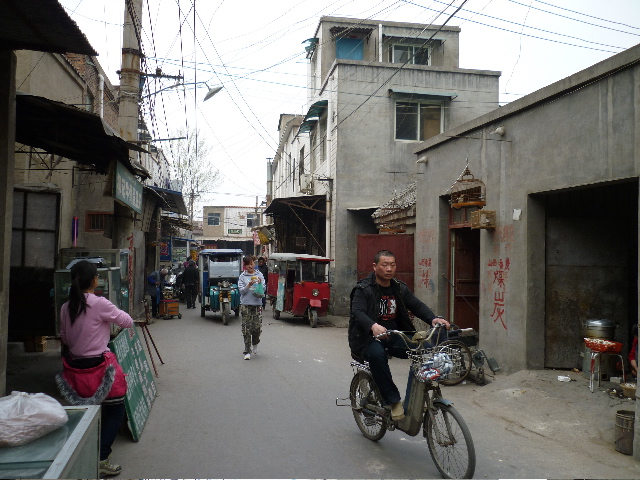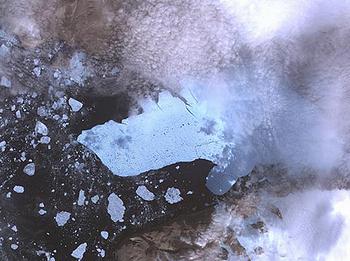Continued from node 6211
Operation Defensive Shield
The Sept. 11, 2001 devastating terrorist attacks on the Pentagon and New York’s World Trade Center would of course open a new era of US military adventures nearly throughout the Islamic world. In his Oct. 7 statement on the attack, terrorist leader Osama bin Laden of the feared al-Qaeda network repeatedly invoked the Palestinian cause. He pledged: “I swear by Almighty God who raised the heavens without pillars that neither the United States nor he who lives in the United States will enjoy security before we can see it as a reality in Palestine…” (Osama bin Laden statement, Oct. 7, 2001, online at World War 4 Report)
Prime Minister Sharon from the beginning attempted to wed his own struggle against Palestinian militants to the new US crusade against international terrorism, stating on the day of the attacks: “At this most difficult hour, Israelis stand with you ready to provide any assistance. The government of Israel declares tomorrow a day of mourning as we bow our heads and share the pain of the American people.” Hamas leader Shiekh Yassin was equally quick to distance his struggle from al-Qaeda’s designs: “We are not ready to move our struggle outside the occupied Palestinian land. We are not prepared to open international fronts, however much we criticize the unfair American position,” he told reporters in Gaza. Arafat too quickly denounced the Sept. 11 attacks. But international footage of Palestinians apparently celebrating the attacks served as effective propaganda for Israel. CNN issued a statement denying rumors that it had re-broadcast old footage after the attacks of Palestinians cheering for Saddam Hussein in the 1991 Gulf War, to deceive viewers. (Fox News, Sept. 12, 2001; CNN, Sept. 20, 2001)
The situation in Palestine escalated along with the world situation that autumn. A wave of suicide attacks left 25 dead in Israel in November, prompting Sharon’s government to respond with military strikes on the West Bank and Gaza Strip. An emergency Israeli cabinet meeting in the prelude to the air-strikes issued a statement calling the Palestinian Authority a “terror-supporting entity,” and Yasser Arafat’s Fatah political organization and elite paramilitary Force 17 “terrorist groups.” Accusing Arafat of a “war of terror,” Sharon actually ordered air-strikes on PA targets, wiping out Arafat’s personal helicopters in Ramallah, killing two. (ABC News, New York Times, Dec. 4, 2001).
But Arafat actually complied with Israeli demands for a crackdown on the Hamas network and arrested the group’s spiritual leader Sheikh Yassin for complicity in the suicide attacks. The inevitable result was more clashes between Hamas supporters and PA police. Ironically, the suicide attacks were themselves retaliation for the Nov. 23 assassination of Hamas leader Mahmoud Abu Hanoud—who had been serving a twelve-year term in a PA prison for terrorist activity until he escaped when a May 18 Israeli air-raid hit the Nablus prison building in a bungled attempt to kill him. (FAIR, Dec. 6, 2001)
In a tilt to Israel, the US froze the assets of US-based charities said to be Hamas fronts—and condemned the suicide attacks without the usual admonition to Sharon to refrain from military incursions into PA-controlled areas. (New York Times, Dec. 4, 2001).
A cycle of retaliatory violence ensued, in which Palestinian attacks on settlers resulted in Israeli air-strikes, resulting in further Palestinian attacks, and so on. The al-Aqsa Brigades, militant wing of Arafat’s Fatah movement, Hamas, and smaller groups such as Islamic Jihad claimed credit for the Palestinian attacks.
Among numerous sites hit by Israeli air raids in Ramallah over the night of Dec. 12 was the Quaker-run Friends School, an elementary school for local Palestinian children. Because the attack occurred at night, no one was injured. (Atlanta Friends’ Meeting press release, Dec. 13, 2001)
After initial hesitancy, the White House backed Israel’s claims that 50 tons of weapons seized by Israeli forces from a boat in the Red Sea in January 2002 were supplied by Iran and bound for Arafat’s forces. Said President Bush in response to Israel’s claim: “Mr. Arafat must renounce terror…” Palestinian Authority cabinet minister Saeb Erekat retorted: “We are guilty [in US eyes] until proven innocent. I don’t know what this compelling evidence is.” (Ha’aretz, Jan. 10, 2002)
That month, Israel’s Chief of Staff Lt. Gen. Shaul Mofaz was in Washington meeting with Deputy Secretary of State Richard Armitage, Deputy Defense Secretary Paul Wolfowitz, Joint Chiefs of Staff head Gen. Richard Myers and National Security Advisor Condoleezza Rice—architects of the President George W. Bush’s bellicose new foreign policy. Seeking to integrate Israel’s war with Palestine into the US war on terrorism, Mofaz accused Iran of deep involvement in terrorism against Israel, anonymous sources said. (AP, Jan. 20, 2002)
Later that month, Israel and the US held a large joint exercise, deploying the Arrow and Patriot missile defense systems in an “Iraqi scenario” war game, preparing for missile attacks on Israel in the event of a US attack on the Saddam Hussein dictatorship. Hundreds of soldiers from US Army anti-aircraft units based in Europe came to Israel for the exercise. Similar exercises had been held almost every year since Desert Storm, but these received greater attention as the US appeared to be preparing for an invasion. (Ha’aretz, Feb. 5, 2002)
Also that month, Israel demolished 70 Palestinian homes at the Rafah refugee camp in Gaza in retaliation for the killing of four Israeli soldiers by Palestinian militants. (New York Times, Jan. 11, 2002)
On Jan. 25, 2002, the Israeli daily Ha’aretz ran a paid statement signed by 53 members of the armed forces calling for troops to refuse orders for repression in the Occupied Territories:
We, combat officers and soldiers of the Israel Defense Forces (IDF), raised on the values of Zionism, sacrifice, and giving to the Jewish people and the State of Israel, who have always served on the front line and were the first to fulfill every mission, regardless of how difficult, in order to defend and strengthen the State of Israel…
We, who have personally witnessed the terrible bloodshed on both sides of the conflict…
We hereby declare that we will not go on fighting a war for the peace of the settlements. We will not go on fighting beyond the ‘green line’ for the purposes of domination, expulsion, starvation, and humiliation of an entire people.
We hereby declare that we shall continue to serve the Israel Defense Forces in any mission that serves the defense of the State of Israel. The mission of occupation and repression does not serve this goal–and we refuse to participate in it. [Seruv.org.il]
Following the statement was a list by name, rank and unit of 53 IDF soldiers. Within a week, the number of signatories had doubled—despite harsh warnings from the government. Sharon said, “It will be the beginning of the end of democracy if soldiers don’t carry out the decisions of the elected government.” (Israel Insider, Feb. 5, 2002)
This movement was just part of a wave of general non-cooperation among IDF reservists. At least 2,500 reservists were absent without leave, while thousands of others had become “gray conscientious objectors,” having fabricated medical or personal reasons not to be called up. Israel jailed some 600 reserve soldiers on charges of evading service. Ishai Menuchim, a reservist tank commander and leader of the anti-occupation draft-resistance movement Yesh Gvul (“There is a Limit”—a reference both to the Green Line and the boundary of what is morally acceptable), said: “The reservists do not care about the territories. Many are in their ’30s and ’40s, they have families and care more about their businesses or studies. So they are not willing to pay the price and risk their lives for something they don’t believe in.” (London Telegraph, Jan. 31, 2002)
Following weeks of escalating retaliatory violence between Israeli troops and Palestinian militants, on Feb. 28, the IDF launched attacks on the West Bank’s Jenin and Balata refugee camps, allegedly controlled by the militant organizations Tanzim (Fatah-aligned) and Hamas. This marked the first time ground troops had been sent in to Palestinian refugee camps. (Ha’aretz, Feb. 28, 2002)
On March 2, nine people, including four children, were killed and over 50 injured when a suicide bomber blew himself up in Jerusalem’s Orthodox Beit Yisrael neighborhood. The al-Aqsa Martyrs Brigade claimed responsibility, which, like Tanzim, was linked to Yasser Arafat’s Fatah political organization, but apparently did not answer to his Palestinian Authority. (Ha’aretz, March 3, 2002)
Dissent was now emerging within the highest levels of Israeli military power. The Council for Peace & Security, a group of 1,000 top-level Israeli reserve generals, colonels, and Shin Bet/Mossad officials, announced a public campaign for a unilateral Israeli withdrawal from all of Gaza and much of the West Bank. The group called for dismantling 50 settlements, the immediate establishment of a Palestinian state, and immediate peace talks with the Palestinians—cease-fire or no. The campaign was dubbed “Saying Shalom to the Palestinians.” (Ha’aretz, Feb. 22, 2002)
But the opening days of March were the bloodiest of the new Intifada. Some 42 Palestinians were killed March 8 in IDF operations against refugee camps, Palestinian Authority buildings and other targets in the Occupied Territories. In Tul Karm, elite IDF Golani troops seized control of a local refugee camp, detaining some 1,300 camp residents. Paratroopers took control of large areas in Bethlehem and surrounding camps. Israeli helicopters also fired on a refugee camp near Ramallah, and Israeli tanks entered Rafah in the southern Gaza Strip. Israeli helicopters and gunboats totally destroyed Arafat’s Gaza headquarters early March 10, hours after a Palestinian suicide bomber killed 11 and injured over 50 at a busy cafe in West Jerusalem, with Hamas claiming responsibility. (World War 4 Report round-up, March 10, 2002)
Saudi foreign minister Prince Saud al-Faisal, at a Cairo conference with Arab heads of state to develop a peace plan for Israel-Palestine, called the March 8 violence “Black Friday.” The Saudi peace plan, approved by the Arab League, had called for the Arab nations to “normalize” relations with Israel in return for an Israeli withdrawal from all territories conquered in the 1967 war. It was now toughened. The term “normalization” was dropped, and demands were added for restitution for Palestinian refugees, as well as a specific reference to Israeli withdrawal from East Jerusalem. (New York Times, March 9; Ha’aretz, March 10, 2002; Dolphin, p. 16)
A Zionist terrorist underground meanwhile seemed to be re-emerging. In southern Jerusalem’s Arab neighborhood of Sur Bahir on March 5, metal cones hidden in a grove of pines in a school yard exploded, spraying bullets and shrapnel all over the yard, breaking windows in the schoolhouse and sending students scrambling under their desks. The bomb was set to go off during morning exercises when the yard is usually filled with some 400 Palestinian junior high school students—the death toll would have been high if the cones hadn’t been discovered ten minutes before detonation and the yard evacuated. An Israel Radio reporter received a message claiming responsibility for the attack in the name of “Revenge of the Infants,” saying it was intended to avenge the killing of Jewish children by Palestinian suicide bombers. But Jerusalem Mayor Ehud Olmert suggested the bombing was a provocation by Palestinian militants: “Suicide, killing themselves, is not foreign to their repertoire. So one can imagine the possibility that they’re doing it to themselves in an attempt to create a provocation, to stir up this population.” Angry students later marched out of the schoolyard, holding signs reading “Stop killing our children,” and hurling rocks at Israeli riot police, who responded with stun grenades and tear gas. (New York Times, March 6, 2002 via World War 4 Report) [top]
On March 12, the UN Security Council voted up the US-drafted Resolution 1397, “Affirming a vision of a region where two States, Israel and Palestine, live side by side within secure and recognized borders.” Resolution 1397 also encouraged Saudi Crown Prince Abdullah’s peace initiative. Fourteen of the 15 Security Council members voted in favor, with Syria abstaining. The theretofore obstructionist US offered the resolution as it was attempting to sell Arab regimes on military intervention against Iraq. The vote came at the end of a day in which Israeli troops invaded towns and refugee camps in the West Bank and Gaza Strip, killing at least 30 Palestinians. (The Guardian, March 14; MSNBC, March 13, 2002, via World War 4 Report)
On March 14, eight Palestinians and three Israeli soldiers were killed as Israeli forces invaded the West Bank town of Ramallah and other targets in the Palestinian territories. President Bush mildly criticized Israel’s push into the West Bank and Gaza, saying “the recent actions are not helpful.” (The Guardian, March 14, 2002)
Following protests by Holocaust survivors, Israeli Chief of Staff Lt. Gen. Mofaz ordered the IDF to immediately stop marking numbers on the forearms of Palestinians detained in the sweep of refugee camps. Mofaz said there had not been an order to mark captives with ink, and that he had ordered an investigation into the matter. In Knesset testimony, cabinet minister and Holocaust survivor Yosef Lapid called the connotation of the act “unbearable,” recalling the ID numbers printed on the arms of Jewish inmates at the Auschwitz death camp. A military source told the Jerusalem Post that numbers had been inked on the forearms of Palestinians to facilitate the interrogation process at a detainment camp in the Tulkarm area. (Jerusalem Post, March 13, 2002 via World War 4 Report)
Despite an official Israeli ban on the house demolitions, the practice had continued. According to a February report by the B’tselem human rights group, Israel had by then demolished hundreds of houses in refugee camps in the Gaza alone, rendering 5,124 people homeless since the beginning of the Second Intifada. (Jerusalem Post, Feb. 4, 2002 via World War 4 Report)
Hardline Israeli Infrastructure Minister Avigdor Lieberman submitted his letter of resignation to Prime Minister Sharon March 12. Tourism Minister Benny Elon also resigned. In an interview upon his resignation, Elon said he would work on a “right-wing peace plan,” under which “Israel would dismantle the Palestinian Authority,” the Oslo Accords principle of a two-state solution “would be nullified,” and Palestinian refugees would be resettled “in neighboring Arab countries.” His own “two-state solution” called for Israeli sovereignty over the Palestinian territories, and establishment of a “Palestinian-Jordanian state” in Jordan. (Jerusalem Post, March 15, 2002 via World War 4 Report)
Some 50,000 right-wing demonstrators attended a mass rally in Tel Aviv’s Rabin Square March 11, under the slogan “A strong nation will defeat terror.” Addressing the crowd, reserve Brig. Gen. Effi Eitam called on Sharon to be “a true Lion of Judah. If you are, the nation will be at your side.” Gen. Eitam was the author of a recent “security-political plan” urging Sharon to re-occupy and annex the Palestinian territories. (World War Report, Feb. 2, 2002; Ha’aretz, March 11, 2002)
With Vice President Dick Cheney on the ground in Israel, violence again escalated. On March 18, Israel began to pull back from positions in the Palestinian territories after a rare joint meeting of Israeli and Palestinian security chiefs, brought together by US envoy Gen. Anthony Zinni. As Zinni worked to broker a truce, Cheney was pictured shaking hands with Israeli Prime Minister Ariel Sharon on the front page of the New York Times March 19. Appearing with Sharon at a press conference that day, Cheney announced he would not meet with Palestinian leader Yasser Arafat until a truce was in place. The following days, two suicide bombings left several dead in Jerusalem and Tel Aviv. On the day of the second blast, the US State Department put the al-Aqsa Martyrs Brigades on the official list of “foreign terrorist organizations.” In a statement, al-Aqsa responded that making the list “is an honor for the brigades” because “America is the greatest sponsor of terrorism in the world.” It vowed to step up bombings. (New York Times, March 23, 2002)
The Israeli human rights group B’Tselem released a report entitled “Trigger Happy: Unjustified Gunfire and the IDF’s Open-Fire Regulations during the al-Aqsa Intifada.” The report documents numerous incidents of unarmed Palestinian civilians being killed by Israel Defense Forces. To cite but one incident: “On 17 December 2001, several children from the Khan Yunis refugee camp were playing with toy weapons made of plastic. IDF soldiers at a post some one hundred meters away fired live ammunition at them, killing Muhammad Hanaidiq, age 15.” (B’Tselem, March 2002)
B’Tselem wrote that until the outbreak of the new intifada, “the Open-Fire Regulations in the Occupied Territories were based on Israel’s penal code. Soldiers were only allowed to fire live ammunition in two situations: when soldiers were in real and immediate life-threatening danger, and during the apprehension of a suspect. When the intifada began, the IDF defined the events in the Occupied Territories as an ‘armed conflict short of war,’ and expanded the range of situations in which soldiers are permitted to open fire… The new version of the Open-Fire Regulations, which according to press reports are referred to as ‘Blue Lilac,’ have remained secret.” Therefore B’Tselem based its investigation primarily on testimonies from soldiers. (ibid)
But the situation was about to dramatically escalate. On March 27, the Israeli cabinet decided not to let Arafat attend the Arab summit in Beirut—where Arab leaders unanimously agreed to the peace proposal put forward by Saudi Crown Prince Abdullah, calling for Israel to withdraw to its 1967 borders in exchange for normalized relations. The proposal was rejected by Israel. Just before the Beirut vote took place, Islamic Jihad killed 22 Israelis celebrating Passover with a suicide bomb in Netanya, north of Tel Aviv. The Palestinian Authority “strongly condemned” the bombing, and offered an immediate cease-fire. But the Israeli cabinet declared Arafat “an enemy.” On March 30, Israel invaded Ramallah with 150 tanks, besieging Arafat in his compound. Arafat told reporters that Israel wanted to make him “either a hostage, a runaway, or a martyr… I tell them I will be a martyr, a martyr, a martyr.” (Jerusalem Post, March 30; Ha’aretz, March 31, 2002 via World War 4 Report)
With Ramallah under siege, on March 31, a suicide bomber blew up himself and 15 others in restaurant in Haifa. Hamas took responsibility. (Ha’aretz, March 31)
Journalists were ordered out of Ramallah as IDF tanks and troops rolled in, and a “Closed Military Area” was declared. IDF troops fired warning shots and threw stun grenades at journalists who stayed behind in defiance of the ban (New York Times, April 6, 2002 via World War 4 Report)
On April 2 the IDF besieged Bethlehem’s Church of the Nativity—purported birthplace of Jesus—where some 250 armed Palestinians had taken refuge, and shoot-out ensued. The bell-ringer at the church was caught in the crossfire and bled to death in Bethlehem’s Manger Square before an ambulance could reach him. (The Independent, April 4, 2002 via World War 4 Report)
April 6 the Palestine Red Crescent Society reported at least 30 civilians killed in the Jenin refugee camp, with total casualties of over 100. Eyewitnesses reported IDF bulldozers leveling homes with the families inside. Jenin’s three modest hospitals were without electricity or water. A hospital in Jenin came under fire in a battle between Israeli and Palestinian forces, as the Red Cross struggled to evacuate the ill and wounded. The Red Cross, World Health Organization and UNWRA all reported deaths due to Israeli forces stopping rescuers getting through. (World War 4 Report, April 7, 2002)
In Nablus, the West Bank’s biggest city, fierce fighting rocked the market, or casbah, where Palestinian fighters made a stand. (ibid)
“Operation Defensive Shield,” as the IDF dubbed it, was Israel’s biggest offensive in the Palestinian territories in 34 years of occupation. The US envoy, Gen. Anthony Zinni, visited Arafat April 5 in his besieged Ramallah compound, now reduced mostly to mounds of rubble ringed by barbed wire. Sharon expressed displeasure withe the visit, and barred a European Union delegation from meeting Arafat. Israeli troops threw stun grenades, fired rubber bullets and rammed the vehicles of journalists trying to cover Zinni’s arrival. (The Guardian, April 6, 2002, via World War 4 Report)
Sharon for the first time publicly proposed sending Arafat into exile, saying he would be released to European diplomats on condition that he does not return. Sharon said Arafat “can’t take anyone with him, the murderers who are located around him there. And…it would have to be a one-way ticket.” (Irish Times, April 2, 2002)
Avigdor Lieberman, who had resigned his cabinet seat accusing Sharon of being too soft on the Palestinians, blasted the West Bank ground offensive, saying that Arafat and his headquarters should be “erased from the face of the earth.” Lieberman, explicitly invoked the US campaign then underway in Afghanistan in calling for massive aerial bombardment of the Palestinian territories. “Why should we endanger our troops? What did the armies of the United States and NATO do in Yugoslavia and Afghanistan? They didn’t endanger their soldiers. They simply bombed everything from above.” (Ha’aretz, April 1, 2002)
On April 4, Lebanon-based Hezbollah guerillas attacked the contested Har Dov/Shaba Farms area in the Golan Heights, seriously wounding one IDF soldier. Meanwhile, two Katyusha rockets hit Israeli territory from Syria near Kiryat Shmona. Shaba Farms had been seized from Syria in 1967, but was claimed by Beirut as part of Lebanon in a border dispute dating to the Mandate period. More Hezbollah attacks on Israeli forces in the disputed enclave would follow in ensuing months. (Ha’aretz, April 4, 2002)
The number of IDF reservists resisting service in the Palestinian territories surged to 375 officers and soldiers, who had all signed the public letter of refusal. At least 20 “refuseniks” had been jailed, with more facing military tribunals. On March 29, a group of refuseniks demonstrated outside the Prime Minister’s Residence in Jerusalem, carrying Israeli flags to stress their loyalty to Zionism. But Yishai Menuhin, spokesperson for Yesh Gvul said many conscripts who had not signed the refuseniks’ letter had also been jailed for conscientious objection—and the refusal movement was both more widespread and politically diverse than was being portrayed in the media. Menuhin said, “among us there are many Zionists, but also many non-Zionists and anti-Zionists. We support them all.” The Forum in Support of Conscientious Objectors distributed a brochure to draftees and reservists documenting human rights abuses in the territories, and stating: “The international community has already brought to trial soldiers who committed war crimes in the Balkans. Do you want to be next?” (Ha’aretz, April 1, 2002 via World War 4 Report)
Gush Shalom and other Israeli peace groups—both Jewish and Arab—held a “March Against the War” April 3, attempting to cross into the West Bank to deliver solidarity aid to the besieged communities. The marchers, dressed in white, were accompanied by trucks of food and medical supplies destined for Palestinian relief and women’s organizations. The activists intended to march from Jerusalem to Ramallah, but were stopped at A-Ram Checkpoint in north Jerusalem, where they were dispersed by police and IDF troops who used tear gas, batons and rifle butts. (Ha’aretz, April 4, 2002 via World War 4 Report)
By this point, 300 Israelis and 1,200 Palestinians had been killed since the new Intifada began in September 2000. According to the Israeli human rights group B’Tselem, 897 of the Palestinians killed from Sept. 29, 2000 though March 30, 2002 were civilians rather than armed militants, and 192 were children. B’Tselem found that Israeli were killed by Palestinians in the same period, 253 were civilians, including 48 children. (FAIR, April 4, 2002)
Members of the Norwegian committee that awards the annual Nobel Peace Prize launched an unprecedented verbal assault on Israeli foreign minister and Nobel peace laureate Shimon Peres. Committee members said they regretted that Peres’ prize could not be recalled because, as a member of the Israeli cabinet, he had not acted to prevent the re-occupation of Palestinian territory. Committee chairman Geir Lundestad noted that if Arafat were to be killed in the Israeli siege, one Nobel laureate would in effect have killed the other. (BBC, April 5, 2002 via World War 4 Report)
Israeli intellectuals and Holocaust survivors reacted with outrage to statements by Portuguese Nobel Literature Prize laureate Jose Saramago comparing Israel’s siege of Ramallah to the Nazi genocide. Saramago, who had recently visited the Palestinian city as part of an International Parliament of Writers (IPW) delegation, told the Israeli press that “the spirit of Auschwitz” could be seen in the assault on Ramallah. “This place is being turned into a concentration camp,” he said. According to Haaretz, when asked where the gas chambers were, he replied “so far, there are none.” Israeli legislator and Holocaust survivor Yosef Lapid said: “There is nothing more despicable than to use the Holocaust and its victims in such a way as this novelist with a worldwide reputation has done.” (DPA, March 26, 2002 via World War 4 Report)
Meanwhile, speaking at a ceremony commemorating Holocaust victims in New York City, Mayor Mike Bloomberg said: “Jewish people today are confronted by a new twisted ideology of hatred—that is Islamic extremism. Suicide bombers…are just the same thing as the concentration camps of the Nazis.” (NY Daily News, April 8, 2002 via World War 4 Report)
On April 7, President Bush said Arafat “needs to speak clearly, in Arabic, to the people of that region and condemn terrorist activities. At the very minimum, he ought to at least say something.” But on March 28, after the Passover suicide attack in Netanya, an Arafat speech broadcast on Palestinian TV in Arabic had stated: “On this occasion, I would like once again to reiterate our condemnation of yesterday’s operation in Netanya, in which a number of innocent Israeli civilians were killed and wounded. This operation constitutes a deviation from our policy and a violation of our national and human values…” (Daoud Kuttab, April 9, 2002)
US Secretary of State Colin Powell met with Yasser Arafat in besieged Ramallah April 15—much to the chagrin of Sharon. The meeting was portrayed as Arafat’s reward for a statement denouncing the suicide bombings. Some 40 international peace activists holed up in Arafat’s compound hoped to witness the meeting, but were herded by Powell’s US diplomatic security bodyguards into one room and told to stay out of sight. Netta Golan, the only Israeli in the group, said, “Everyone here has taken into consideration that there is a high probability we might die.” (NY Daily News, April 15, 2002 via World War 4 Report)
Arafat’s statement, in Arabic, read in part:
The Palestinian leadership and His Excellency President Arafat express their deep condemnation for all terrorist activities, whether it is state terrorism, terrorism by a group or individual terrorism. This position comes from our steady principle that rejects using violence and terror against civilians as a way to achieve political goals. We declared this position beginning in 1988 and also when we signed the Oslo accords at the White House, and we have repeated it several times before, including our declaration on Dec. 16 last year. After that, we did not find any Israeli response but more Israeli escalation, a tighter siege, further occupation of our people, refugee camps, cities, villages, and more destruction of our infrastructure. We strongly condemn all the attacks targeting civilians from both sides… [AP, April 13, 2002 via World War 4 Report]
A front-page New York Times analysis April 14 said Palestinians were angered by “what they perceive as a double-standard from Washington”—constant pressure to condemn the suicide bombings, yet no condemnation from Washington of the hundreds of Palestinian casualties of Operation Defensive Shield, “which the Palestinians refer to as state terrorism.” (New York Times, April 14, 2002)
As the IDF began to withdraw from Jenin, the UN Security Council voted unanimously April 20 to send a fact-finding mission to look into what happened at the devastated Palestinian refugee camp. But following heavy diplomatic pressure from the US and Israel, the resolution did not describe the mission as an investigation. As camp residents started to retrieve bodies from the ruins, Israeli authorities insisted there was “no massacre.” Palestinians claimed up to 500 residents were killed in Jenin, while Israel put the death toll at about 50 Palestinians and 23 Israeli soldiers. (CNN, April 19; BBC, April 20, 2002 via World War 4 Report)
After touring Jenin, UN special Middle East envoy Terje Larsen said the scene was “horrifying beyond belief,” that the most heavily destroyed area “looks like there’s been an earthquake here,” and is permeated with the “stench of death.” Reported Larsen: “I saw people using their bare hands to dig out the body of a 12-year-old boy. More than 2,000 people have been left without a roof over their heads and there is an acute lack of water and food in the camp and town.” (Ha’aretz, April 18, 2002 via World War 4 Report)
Ariel Sharon dismissed accounts of a massacre and mass clandestine graves at Jenin as “lies” of the “Palestinian empire of falsehood… They look you in the eye and lie.” Defense Minister Binyamin Ben-Eliezer told the cabinet the number of Palestinians killed in Jenin was in the dozens, not the hundreds. (Jerusalem Post, April 15, 2002 via World War 4 Report)
On April 21, Sharon declared an end to “this stage” of Defensive Shield, ordering troops out of Nablus and Ramallah, except for the ring around Arafat’s compound. In Nablus, the ancient Casbah was in ruins after a bloody battle between IDF forces and Palestinian militants who had taken refuge there. Hundreds of Palestinians surrendered at al-Ayn refugee camp near Nablus after five straight hours of ground-fire from tanks, and missile-fire from helicopter gunships. (The Guardian, April 9, 11, 2002 via World War 4 Report)
In another move to control media portrayals, the Arab section of Israel Radio was issued a new set of guidelines for terminology to be used in broadcasts, barring the word “victim” when referring to Palestinian civilians killed in the Intifada. Instead of “victim,” broadcasters were ordered to say “the dead.” The word “assassination” were not to be used in regard to Israel’s assassinations of Palestinian activists. Instead, the word “killing” [katal in Arabic] was to be used—despite the fact that the IDF itself called these actions “targeted assassinations.” (AP, April 26, 2002 via World War 4 Report)
Israel said the standoff at Bethlehem’s Church of the Nativity could be resolved if the gunmen inside agree to a face trial in Israel—or accept permanent exile. The offer was rejected. The Franciscan order asked Israel to allow some of the 200 armed Palestinians sheltering in the church to leave unharmed, and called for water and electricity to be urgently supplied to the complex. An Armenian monk at the complex was seriously wounded by an Israeli bullet April 10. (BBC News, April 12, 2002 via World War 4 Report)
A new report by human rights group B’Tselem documented massive abuses by the IDF in Operation Defensive Shield, including: use of civilians as human shields, obstruction of medical treatment, mass detention and torture, and overcrowding and humiliating treatment of detainees: “There are 1,000 detainees held in Ofer military camp, between 1,000 and 1,500 at Megiddo military prison, 100 in the detention facility in Salem, opened near Jenin and several dozens in permanent detention facilities in the West Bank. Detainees released from Ofer reported harsh holding conditions. Among other things, they reported insufficient food, overcrowding, being cold, humiliation and beatings.” (ReliefWeb, April 11, 2002)
Three prominent international human rights groups released a joint statement April 7:
Amnesty International, Human Rights Watch and the International Commission of Jurists want to send a clear, unambiguous message to all parties to this conflict, and to the international community. Stop the deliberate targeting of civilians and other persons protected by international humanitarian law. Stop actions that harm them. Immediately deploy international monitors to protect the human rights of Palestinians and Israelis… We strongly deplore actions by the state of Israel that harm persons protected by international humanitarian law. These include prolonged curfews with severe restrictions on the movement of people and access for medical personnel; intensified collective punishments; wanton damage to homes, cars and civilian property; looting and theft; and the coerced use of civilians to assist military operations. Such actions violate international standards and transcend any justification of military necessity… Even in the face of this situation, we are appalled by an increase in the use of suicide bombers by armed Palestinian groups to attack Israeli civilians. Such deliberate attacks on civilians are absolutely prohibited by international humanitarian law. These actions tarnish the Palestinian cause and will not at all help the situation… [Amnesty International, April 9, 2002]
Israel claimed to have found documents at Ramallah linking Arafat to suicide bombings. Ariel Sharon told Ha’aretz on March 5: “The PA is behind the terror… Arafat is behind the terror. Our pressure is aimed at ending the terror. Don’t expect Arafat to act against the terror. We have to cause them heavy casualties and then they’ll know they can’t keep using terror and win political achievements.” (War in Context, March 14)
On April 15 the IDF announced the arrest in Ramallah of Marwan Barghouti, the Fatah politician and Palestinian Legislative Council representative who Israel said turned Tanzim from a civil guard into a West Bank militia that organized suicide bombings. (Ha’artez, April 16)
Thousands attended protests in European cities April 13 to express solidarity with the Palestinians and denounce Operation Defensive Shield. 15,000 marched through central London, some carrying posters depicting Ariel Sharon behind bars and comparing him to Adolf Hitler. (Ha’aretz, April 14, 2002)
UN human rights chief Mary Robinson human rights chief repeatedly urged Israel to allow her travel to the country for a delayed fact-finding mission on the conflict, citing “growing concerns over recent events in Jenin.” Israeli authorities refused to approve the planned five-day visit by Robinson. Finally, Robinson’s office announced that the mission had been cancelled because it “will not be facilitated by the Israeli authorities.” (AFP, April 19, 2002)
The UN Commission on Human Rights in Geneva condemned Israel for “acts of mass killings” and “gross violations” of humanitarian law on April 15. The resolution was approved by 40 votes in favor and five against. (Jerusalem Post, April 19, 2002)
While the IDF pulled out of Jenin, the camp remained surrounded. Defense Minister Binyamin Ben-Eliezer said troops would also be withdrawing from occupied West Bank towns. But anticipating future fighting, Ben-Eliezer said he prefered to call the withdrawal a “redeployment” (Ha’aretz, April 21, 2002 via World War 4 Report)
Daoud Kuttab, director of the Institute of Modern Media at Jerusalem’s al-Quds University, described in a New York Times op-ed piece April 6 how the Institute’s al-Quds Educational Television station in Ramallah was ransacked by IDF troops. The studio and offices were broken into, equipment destroyed and two staffers arrested. (Via World War 4 Report)
The siege that continued at Bethlehem came just after a $250 million renovation project of the ancient city was completed, funded by foreign aid agencies and aimed at drawing tourists—especially for the 2000 Millennium celebrations, which brought Pope John Paul II and numerous heads of state to the town. Now much of the town was in much worse shape than before the project. Reported the Washington Post April 14:
Israeli tanks have turned historic Madbassah Square into rubble, three years after it was renovated at a cost of $2 million. Fires and explosives have ruined a 300-year-old pilgrims’ hostel with soaring arches that took two years to refurbish. A once-sparkling new artists’ colony, recently completed for $600,000, has been ransacked and defaced… [A]rmored personnel carriers rumble through the narrow and deserted streets of the Old City daily, ripping up sidewalks, sideswiping stone pillars and banging into storefronts with centuries-old facades. [Via World War 4 Report]
President George Bush weighed in on Operation Defensive Shield April 19, stating: “I do believe Ariel Sharon is a man of peace… I’m confident he wants Israel to be able to exist at peace with its neighbors. I mean, he’s told that to us here in the Oval Office. He has embraced the notion of two states living side by side.” Bush said he was satisfied that Sharon was acting in good faith. “He gave me a timetable, and he met the timetable” for beginning withdrawal from re-occupied towns. He also said, “Mr. Arafat did condemn terrorism, and now we will hold him to account.” (ReliefWeb, April 18, 2002) A few hours later, Arafat, in a telephone interview with Tunisian TV, called Sharon “bloodthirsty” and said “his history is known. His hands are stained in blood.” (CNN, April 19, 2002 via World War 4 Report)
Sharon told his weekly cabinet meeting April 21 that no government that he headed would evacuate Jewish settlements on the West Bank. Banging on the table, Sharon said he would not even discuss evacuating the settlements until the elections, set for October 2003, or even beyond should he be elected for a second term. (Ha’aretz, April 21, 2002 via World War 4 Report)
An initial probe into the Israeli attack on the Jenin refugee camp led an Amnesty International delegate to declare at a London press conference “we have concluded that very serious breaches of international law were committed, and we are talking here of war crimes.” (Ha’aretz, April 29, 2002 via World War 4 Report)
But the world media focused on the more ambiguous question of whether there had been a “massacre” at Jenin—with war crimes short of a massacre implicitly minimized. For instance, veteran commentator Daniel Schorr on National Public Radio said: “Some things happened which were not terribly, terribly nice, and I’m sure they happened a lot. But if the question is raised that ‘Was there a deliberate massacre of civilians in Jenin?’ the answer seems to come out no.” (FAIR, May 10, 2002)
In late April, citing new intelligence on the location of militants, Israel made new brief incursions into Qalqilya and Hebron, sparking new clashes. (BBC News, AFP, April 26, 2002 via World War 4 Report)
There were conflicting statements on suicide bombings from the Arab and Islamic leadership. Yasser Arafat’s wife Suha Arafat endorsed suicide bombing attacks in a London-based Arabic magazine, al-Majallah, saying if she had a son, there would be “no greater honor” than to sacrifice him for the Palestinian cause. “Would you expect me and my children to be less patriotic and more eager to live than my countrymen and their father and leader who is seeking martydom?” Suha Arafat, who had no son, was living with her daughter in Paris. (New York Times, April 15, 2002 via World War 4 Report)
Two prominent Islamic clerics also endorsed suicide bombings. Mohammed Sayed Tantawi, the most prominent religious scholar at al-Ahzar University in Cairo, called “martydom operations” the “highest form of jihad operations” and that such attacks were “an Islamic commandment until the people of Palestine regain their land and cause the cruel Israeli aggression to retreat.” However, a ruling by the grand mufti of Saudi Arabia “declared suicide to be against Islam.” (New York Times, April 15, 2002 via World War 4 Report)
Newspapers in Saudi Arabia stopped using the term “shaheed,” or martyr, in reference to suicide attackers. In Egypt, the pro-government daily Al-Riad called for an end to “suicide bombings,” suggesting instead that the Palestinians look to their “supreme national interests.” (Ha’aretz, May 22, 2002 via World War 4 Report)
A commander of the al-Aksa Martyr’s Brigades interviewed in Nablus by the New York Times said his group would no longer conduct suicide bombing attacks inside the 1967 borders of Israel. But the commander, identified only by his nom de guerre Abu Mujahed, said the group would continue its attacks in the occupied territories. Abu Mujahed said that he regretted the loss of civilian life. “I am sorry for all the civilians that died in this intifada, both Israelis and Palestinians,” he said. “I want to fight whoever is in charge of the government of Israel, not civilians.” He also said he was concerned the attacks on restaurants, buses and the like was hurting the Palestinian cause: “What was happening is that we were delivering the wrong message to the world.” (New York Times, April 23, 2002 via World War 4 Report)
Hamas moderate Ismail Abu Shanab said that if Israel withdrew to its pre-1967 borders, Hamas would “cease all military activities.” Asked if that meant Hamas would give up its objective of destroying Israel, Shanab said “there is a right for every generation to be satisfied with their condition. Now, when Palestinians and Israelis live among each other in peace, they may cooperate with each other in a way that everyone will be satisfied.” (San Francisco Chronicle, April 28 via World War 4 Report)
In a makeshift court inside Arafat’s compound, four members of the Popular Front for the Liberation of Palestine were convicted for the murder of right-wing Israeli Tourism Minister Rehavem Ze’evi. The men were given sentences ranging from one to 18 years in prison. The Israeli government had demanded the extradition of the men to Israel to stand trial for Ze’evi’s murder. Ze’evi was killed in retaliation for the Israeli assassination of the PFLP’s political leader, Abu Ali Mustafa, who himself was killed in retaliation for a successful strike on a Gaza IDF outpost by PFLP operatives. The trial was dismissed as a farce by Palestinian human rights activists. Israeli Prime Minister Ariel Sharon said, “It would have been possible to avoid trying them twice, as they will anyway be brought to trial in Israel.” (Ha’aretz, April 26, 2002 via World War 4 Report)
In May, UN Secretary General Kofi Annan announced that the United Nations would go forward with a report on possible war crimes committed by Israel at Jenin, even though Israel continued to reject the fact-finding mission. Annan would ask Israel and the Palestinians to provide information for the report. (New York Times, May 3, 2002 via World War 4 Report)
The five-week siege at Bethlehem’s Church of the Nativity finally came to an end May 10, when more than 100 Palestinians emerged from the church’s Gate of Humility and walked through a metal detector into Manger Square. In a European Union-brokered deal, 13 militants called “senior terrorists” were transferred in a British plane to Cyprus, from where they would go into exile in Italy, Spain, Greece and Ireland. (World War 4 Report, May 5, 2002)
The leaders of Egypt, Saudi Arabia and Syria, who met at the Egyptian resort of Sharm el Sheik May 11, reaffirmed their commitment to the Saudi initiative that called for peace with Israel in exchange for an Israeli withdrawal to the pre-1967 borders and expressed a “sincere desire for peace and a rejection of violence in all forms.” The meeting came four days after 16 people were killed in suicide bombing in Rishon Letzion, south of Tel Aviv. (New York Times, May 12, 2002 via World War 4 Report)
Hamas spiritual leader Sheikh Yassin said in an interview May 11 that the group would continue suicide bombings, calling them “forms of resistance open against the enemy.” In response to Arafat’s call to cease the bombings, Yassin said: “Hamas always considers the higher interests of the Palestinian people…We have in the past stopped martyrdom operations against the enemy. But they did not stop their killing of our people… That is why we are no longer obligated by our previous initiative.” (Reuters, May 11, 2002 via World War 4 Report)
In a raucous meeting of the Likud central committee, Sharon lost a key vote on whether to allow a future Palestinian state May 13. Sharon’s rival Binyamin Netanyahu stated: “This must be clear—there will not be a Palestinian state west of the Jordan River because that would be a deadly threat to Israel.” (BBC May 13).
That month, four Jewish settlers were detained by the Jerusalem police and the Shin Bet security service on suspicion of planning terror attacks on a girl’s school and other Arab targets in East Jerusalem. A group calling itself “Jewish Underground” distributed leaflets in various settlements taking responsibility for the murder of eight Arabs in terror attacks. (Ha’aretz, May 9, 10, 2002 via World War 4 Report)
The largest peace demonstration since the start of the Intifada in September 2000 was held May 11 in Tel Aviv’s Rabin Square. The protestors, estimated at 100,000 by organizers Peace Now, demanded an immediate withdrawal from Palestinian territories and the dismantling of Israeli settlements there. Singer Yaffa Yarkoni performed, despite having received death threats. (BBC, May 12, 2002)
Despite international outrage against Israel, the idea of “transfer” meanwhile seemed to be gaining currency even in the West. John Derbyshire, a contributing editor to National Review, the foremost American conservative journal, wrote an article describing what he viewed as the five options available to the Palestinians:
1. An independent state, under Arafat or someone just as thuggish.
2. Military occupation by Israel.
3. Re-incorporation into a Jordanian-Palestinian nation.
4. Some sort of UN trusteeship.
5. Expulsion from the West Bank and Gaza, those territories then
incorporated into Israel.
Derbyshire’s conclusion:
When I say “the best option,” I don’t mean “best for the Palestinians.” I don’t think they have any good options. Being Arabs, they are incapable of constructing a rational polity, so their future is probably hopeless whatever happens… Would expulsion be hard on the Palestinians? I suppose it would. Would it be any harder than options 1 thru 4? I doubt it. Do I really give a flying falafel one way or the other? No, not really. [National Review, May 9, 2002]
The Israeli army was now requiring Palestinians living in the West Bank to obtain freedom-of-movement permits in order to travel between cities and towns. Israel did not notify the Palestinian Authority about the change in policy. Representatives of donor countries protested that the system was hindering aid deliveries—and had the effect of splitting the West Bank into eight separate cantons (Jenin, Nablus, Tul Karm, Qalqilya, Ramallah, Jericho, Bethlehem and Hebron), effectively isolated from one another. (Palestine Media Center)
On May 19, three Israelis were killed and 56 injured when a suicide bomber blew himself up in a crowded market in Netanya. The bomber was dressed as an Israeli soldier. The PFLP claimed responsibility for the attack. The PA condemned the attack, saying it “endanger[ed] the Palestinian people, its just cause, its rights, and the future of its dream of a state.” (Ha’aretz, May 20, 2002 via World War 4 Report)
The Revolutionary Council of Araft’s Fatah movement issued a statement May 29 calling for an end to attacks inside Israel: “Military attacks inside the ‘green line’ must stop because they reflect negatively on the image of our national struggle. Resistance to the occupation should be limited within Palestinian land occupied in 1967.” (Washington Post, May 29, 2002 via World War 4 Report)
Soldiers and tanks re-entered the Jenin refugee camp May 17 to search for militants who had evaded capture during Operation Defensive Shield. The army withdrew after making 20 arrests. (BBC, May 17, 2002)
Israel cut the Gaza Strip in half May 22, preventing north-south travel for Palestinians. Tel Aviv said the move was in reprisal for raids on Jewish settlements in the Strip. (Ha’aretz, May 26, 2002 via World War 4 Report)
The IDF again entered several West Bank towns and refugee camps in the search for suspected militants at the end of May, taking over Bethlehem for four days and sealing off most of Ramallah. (BBC, May 30)
B’Tselem released a report in May asserting that while Israeli settlements had administrative control of nearly half the West Bank. The report, titled “Land Grab: Israel’s Settlement Policy in the West Bank,” based on information obtained with difficulty from the civil administration, found that “while the built-up areas of the settlements constitute only 1.7% of the land in the West Bank, the municipal boundaries are over three times as large: 6.8%. Regional councils constitute an additional 35.1%. Thus, a total of 41.9% of the area in the West Bank is controlled by the settlements.” B’Tselem also reiterated that “International humanitarian law prohibits an occupying power from transferring citizens from its own territory to the occupied territory. An occupying power is also prohibited from undertaking permanent changes in the occupied area, unless they are undertaken for the benefit of the local population or are for urgent military needs. Israel’s settlement policy violates these regulations.” (B’Tselem, May 13, 2002)
By this point, there were 400,000 Jewish settlers on the West Bank, including East Jerusalem, in 137 settlements and 100 more “outposts” seen as the nuclei of future settlements. Some 300,000 Palestinians had left or been driven from the West Bank—mostly those who fled during the Six-Day War. (Dolphin, p. 7-8)
Settlement activity continued under Sharon, especially in and around East Jerusalem. But Yosef Barel, the chief the Israeli Broadcast Authority (IBA), issued an order May 30 banning the use of the word “settlers” on radio and TV broadcasts. Barel told editors to identify people solely by their place of residence, leaving editors confused as to how to distinguish between Arab and Jewish residents of the Occupied Territories. (Ha’aretz, May 31, 2002, via World War 4 Report)
An investigation by the Associated Press, based on interviews with settlers, found that the settlement department of the World Zionist Organization, working with Israel’s Jewish Agency, was bringing whole immigrant communities—consisting of dozens of families and their rabbis—directly to the Occupied Territories. “In principle, we are trying to encourage Jews to settle in Judea and Samaria [the West Bank] and Gaza,” Ezra Rosenfeld, a spokesman for West Bank communities told AP. “This is part of our ideology.” The report embarrassed Israeli officials. Jewish Agency chairman Sallai Meridor stated: “The Zionist movement has no plan whose goal is to bring communities to settle precisely beyond the Green Line.” (Ha’aretz, June 9; AP, June 10, 2002 via World War 4 Report)
A bus carrying Israeli soldiers was destroyed when a car bomb exploded next to it June 5, killing 17, and wounding 47 at Meggido (the biblical Armageddon). The car was driven by an Islamic Jihad militant from Jenin. A caller from the militant organization told the press that the attack “took place on the 35th anniversary of the occupation of Jerusalem. We tell our enemies that we will continue to destroy their shields.” (Ha’aretz, June 6, 2002)
Israel again invaded Ramallah the day after the attack in Medgido, sending a column of around 50 tanks and armored vehicles into the town in the pre-dawn hours. The tanks surrounded Arafat’s headquarters, known as the Muqata’a, and opened fire. Several buildings were destroyed, although the PA chief was unharmed. The forces withdrew after six hours. There was a similar IDF incursion into Ramallah on June 10. Jenin was briefly re-occupied on June 7. (Ha’aretz, June 6, 10, 2002)
President George Bush stated the US must start immediate work with the Israelis and Palestinians in establishing a Palestinian state, but failed to set a timetable. In an op-ed piece in the New York Times June 9, “The Way Forward in the Middle East,” Sharon exploited the strategic ambiguity in Security Council Resolution 242:
[T]he United Nations Security Council determined in a historic decision, Resolution 242, that Israel was entitled to “secure and recognized boundaries” and was not expected to withdraw from all the territories that its forces had entered—and from which it was attacked—in the Six Day War. In effect, the resolution established that these were disputed territories where Israel had legitimate rights to defensible borders, besides the claims of the Arab parties to the conflict. [New York Times, June 9, 2002]
George Bush did not respond to this assertion, but stated on June 24: “I call on the Palestinian people to elect new leaders, leaders not compromised by terror.” (Second “Road Map for Peace” speech, June 24, 2002)
The UN World Food Program meanwhile inaugurated a plan to provide emergency food aid to about 500,000 Palestinians. Said WFP regional director Khaled Adly: “Hunger and malnutrition are rapidly increasing among the Palestinians. Even when food is available in some of the markets, many impoverished Palestinians have become increasingly unable to meet all their food needs. The latest Israeli military incursions have dealt a hard blow to an already vulnerable economy pushing many Palestinians into destitution.” (World Food Program, May 21, 2002)
On June 18, a suicide bomber blew himself up on a Jerusalem bus, killing 19 and injuring 50. Seven of dead were Israeli Arabs. It was 8 AM, and there were schoolchildren on the bus, one of whom was killed. (BBC, June 18, 2002)
The PA again condemned the attack “The Palestinian Authority…retains its position of not condoning the killing of civilians—Palestinians and Israelis,” said Saeb Erakat, chief Palestinian negotiator. “We reject any Israeli attempt to assign blame or finger-pointing at us. The Israelis have done nothing in the last 21 months but destroy our ability [to go after the bombers].” But Israel did indeed blame the Palestinian leadership, calling its statements “false condemnations.”(CNN, June 19, 2002)
In an advertisement appearing in the Arabic daily al-Quds, Palestinian leaders Sari Nusseibeh and Hanan Ashrawi called on their people to reconsider suicide attacks. The ad counseled “those dispatching the Palestinian youths to take personal stock of their actions,” which “are only hurting innocent people, creating more hatred and distancing the prospects of achieving Palestinian independence.” (Jerusalem Post, June 19, 2002)
Operation Determined Path
In response to the June 18 Jerusalem suicide bombing, the Israeli army announced it would re-occupy Palestinian territory for an unspecified period—and occupy more each time another attack occurred. An Israeli defense official said this response would be “crushing and decisive,” and the IDF called up 2,000 reservists for the operation, dubbed “Determined Path.” In the following days, the IDF entered Nablus, Jenin, Tul Karm, Bet
Continue ReadingTHE DISPOSSESSION OF THE PALESTINIANS, PT. III




